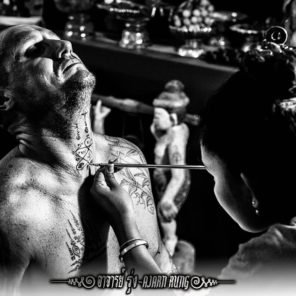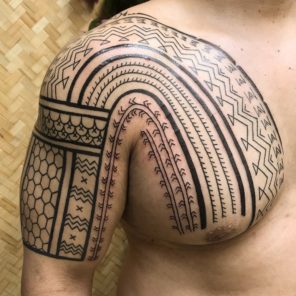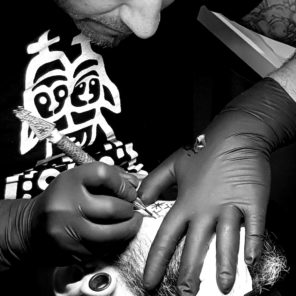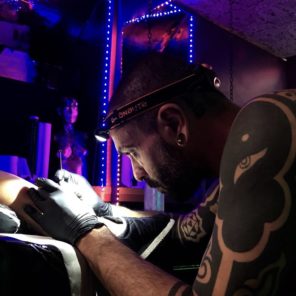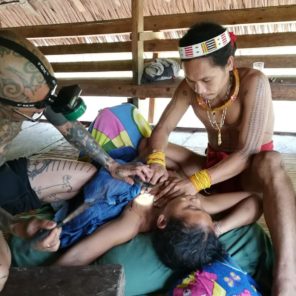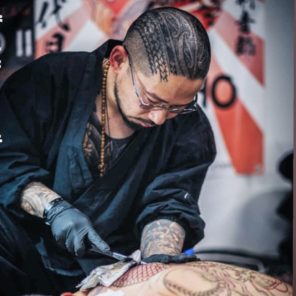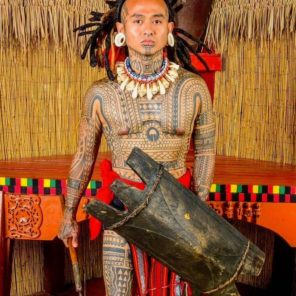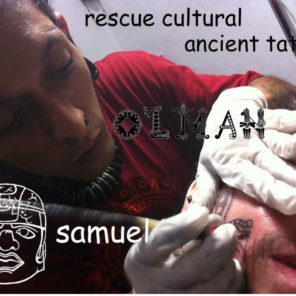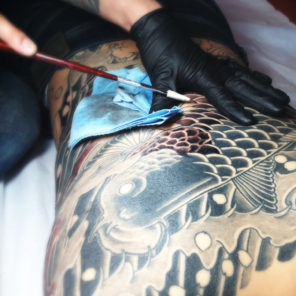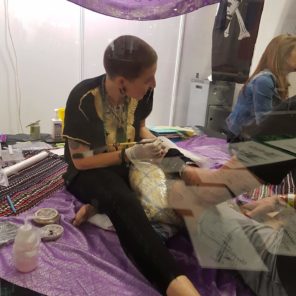The Florence Tattoo Convention invites the public to visit the tribal area to appreciate the roots of ancestral ancient techniques.

Traditional Tattoo Techniques
Hand working tattooing without machine by traditional tattoo techniques.In 1777, the term “tattoo” recalled an indelible mark or figure fixed on the body by scars or insertion of pigment under the skin. For thousands years before that date, however, indigenous peoples practiced various forms of tattoo or scarification, not only to beautify themselves or mark the successes of their lives, but also for pleasure or seek protection from the spirits that inhabited their world.
The mission of the tribal spirit is the intimate exploration of identity through the eyes of those who are reviving the indigenous traditions up to the expression of modern culture. It celebrates the desire to live life to the fullest, by accepting that these experiences will be forever imprinted on us. It’s a ritual for some cultures, also indicator of identity, a reminder of its past, a visual story on the skin.
The art of tattooing has traveled around the world and its popularity has been deeply rooted in contemporary culture through the ancient stories of indigenous peoples, while the awareness of traditional practices tattoo done by hand is definitely disappearing.
Hends Dyak – Traditional Tattoo of Dayak Borneo-Kalimantan Indonesia: born in Indonesia in West Borneo-Kalimantan, he is active in various art exhibitions in Indonesia and studies the traditions of the Dayak and Iban tribes as self-taught. To date he continues to research and study traditional tattoos of the Dayak culture, in particular the “Iban pantang”.
Elle Mana-Festin – handpoke Philippine hammer kalinga batok: Filipino tattoo artist, inspired by the energy of rebirth, started tattooing in 2003, using traditional methods. After years of practice in hand tapping and hand poke, he became famous for his tribal work and characteristic lines. Having studied indigenous tattooing in various areas of the world, today it focuses on keeping culture and traditions alive through art and tattooing.
Kensho II – Japanese long rod: Since 2003, tattooing using traditional Japanese methods and instruments, in particular Tebori and Sashibo. His experience comes from years and years of study, supported by the master, who gave him the opportunity to become his apprentice. Recently he was a guest at the major tattoo conventions around the world, through which he continues to learn and shares his knowledge with other tattoo artists.
Samuel Olman – handpoke traditional puntillismo: originating from Cardenas Tabasco, in Mexico, searching for cultural identity in his ancestors, he comes to the knowledge of ancient tattooing, its techniques and meaning. In antiquity having a tattoo corresponded to having reached a goal, so he decided to carry on this wonderful tradition of ancestral tattooing, not only through meaning, but by reusing the ancient technique.
Leticia La Bruja: Leticia tattoos ritual and ornamental tattoos based in her roots and her clients’ needs. Following her genetic trail, both as an anthropologist and tattooist she studied the SIlk Roads, Iberian, Ancient Mediterannean, North African,Middle Eastern Civilisations and Northern/Eastern European cultures, magical and ethnobotanical practices all of which she uses in her tattooing. She uses the handpoke method using a variety of different tools she makes herself and tattoos only in pigments inspired by prehistoric and ancient art.
Kila: Nordic Handpoke.
Jona: Loreto religious tattoo.
And many more…

